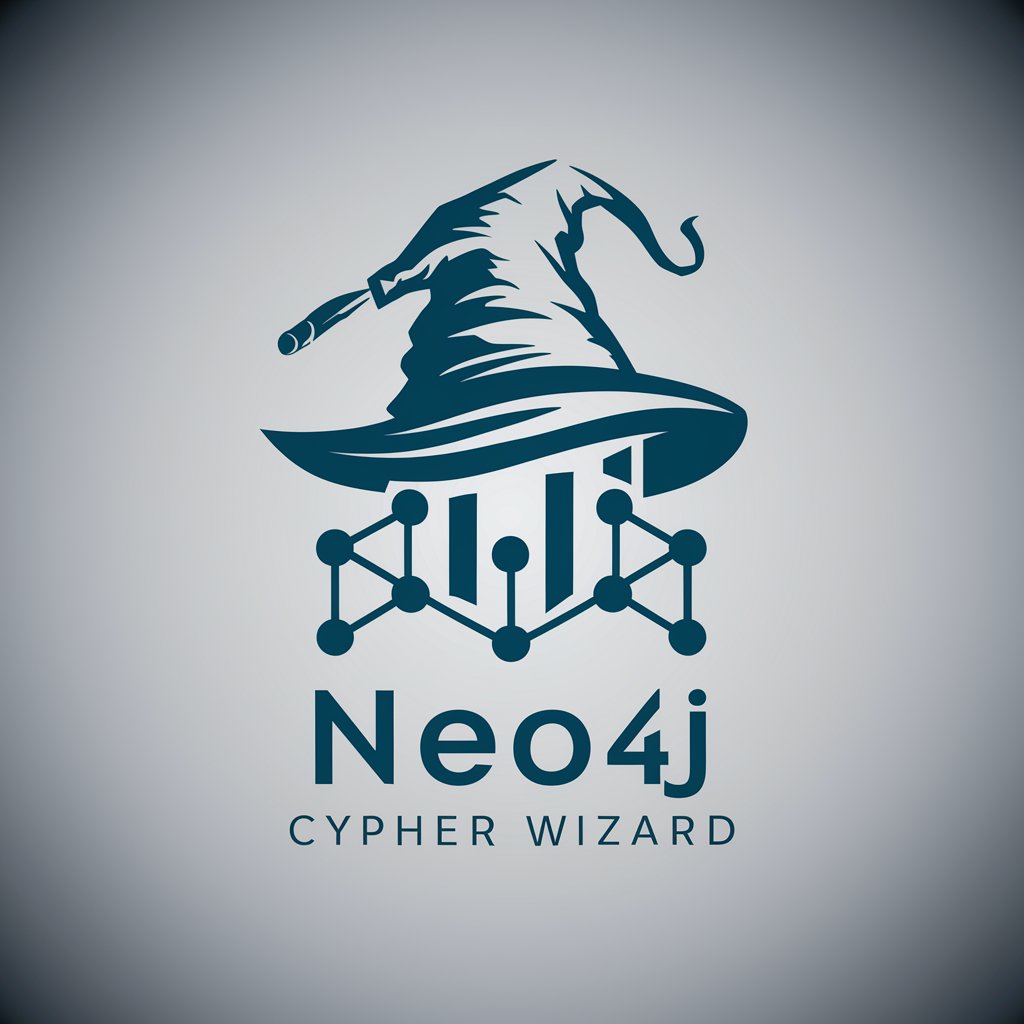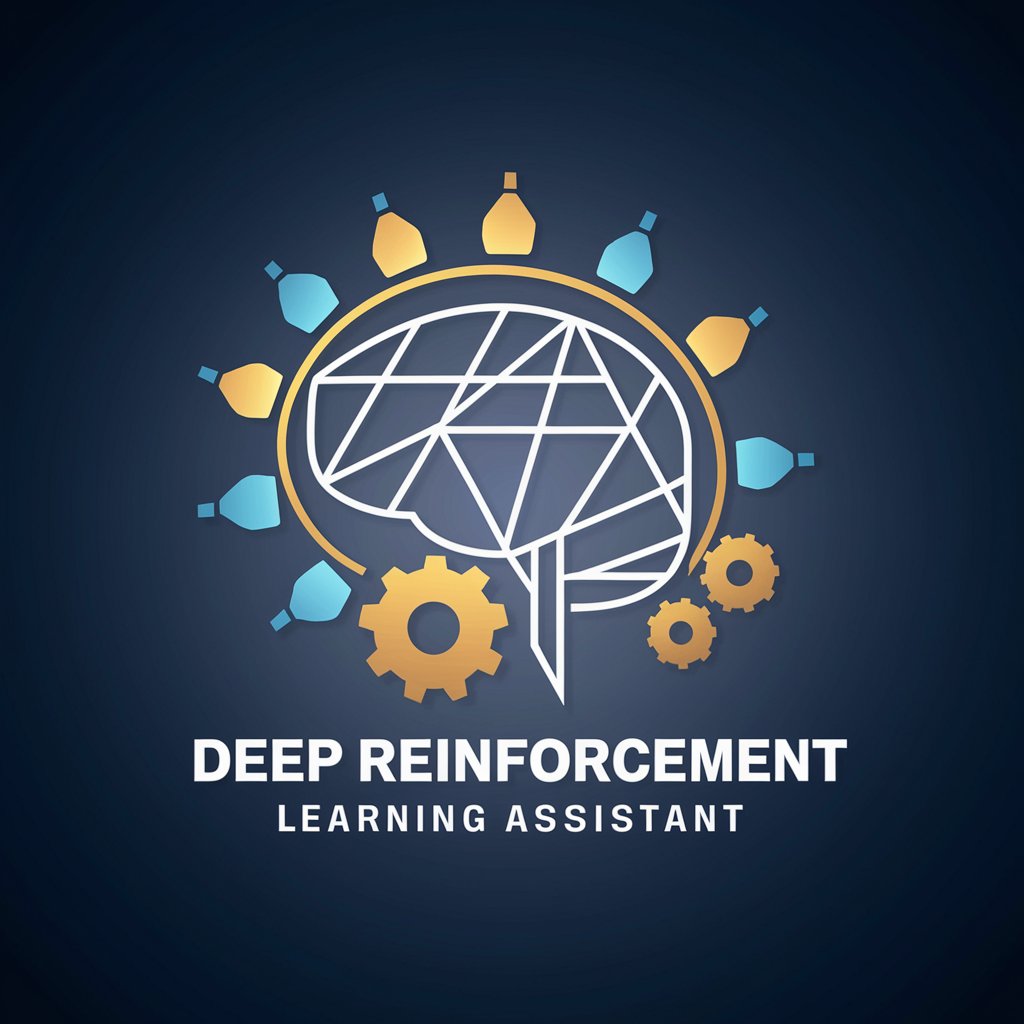
Neo4j Cypher Wizard-AI Cypher query generator
AI-powered Cypher query generator for Neo4j

Neo4j graph expert specializing in Cypher query generation and optimization.
How do I create a Cypher query for finding all nodes connected to a specific node?
What's the best way to optimize a Cypher query for large datasets?
Can you help me understand the relationship types in my Neo4j schema?
How do I update node properties using Cypher in Neo4j?
Get Embed Code
Introduction to Neo4j Cypher Wizard
Neo4j Cypher Wizard is an interactive, user-friendly tool designed to help individuals createNeo4j Cypher Wizard Overview and test Cypher queries for Neo4j, a popular graph database. The primary purpose of Cypher Wizard is to provide a simplified, visual interface for users who may not be fully familiar with Cypher syntax but still wish to interact with Neo4j databases efficiently. The tool allows users to generate Cypher queries through an intuitive point-and-click approach, significantly reducing the learning curve for new users. It is designed for people who need to perform graph data analysis without diving deep into the complexities of writing manual Cypher queries. For example, a user may want to find all direct connections between two nodes in a graph. Using Cypher Wizard, they can select the relevant node types, relationships, and properties visually, and the tool will generate the correct Cypher query behind the scenes. This abstraction is ideal for people who need to explore graph data and gain insights quickly.
Main Functions of Neo4j Cypher Wizard
Query Creation
Example
Creating a query to find all people who are friends with a given user.
Scenario
A social media analytics company needs to analyze the network of a user within a social graph. They use Cypher Wizard to create a query to find all friends of a particular user, generating a query that looks like `MATCH (u:User)-[:FRINeo4j Cypher Wizard detailsEND]->(f:User) WHERE u.name = 'John' RETURN f`.
Visual Query Building
Example
Building a query for finding all nodes connected by a specific relationship type.
Scenario
A retail business wants to analyze relationships between products and customers. Cypher Wizard allows them to visually drag and drop product and customer nodes, link them with a 'PURCHASED' relationship, and generate the appropriate Cypher query like `MATCH (p:Product)<-[:PURCHASED]-(c:Customer) RETURN p, c`.
Query Testing and Execution
Example
Testing a query to return nodes connected to a specified node by a particular relationship.
Scenario
A data scientist working with a biological network in Neo4j uses Cypher Wizard to quickly test queries. For example, to find all species connected to a specific gene, the user builds the query visually, runs it, and sees the results immediately to refine their query.
Result Visualization
Example
Displaying graph results as visual graphs to understand relationships better.
Scenario
A customer support team wants to visualize the relationships between users and their support tickets. After generating a Cypher query, the tool renders the results as a graph, allowing the team to easily see which users have the most open tickets and how they are connected to support agents.
Export Queries
Example
Exporting a Cypher query for use in other tools or reporting.
Scenario
A business analyst working with an e-commerce platform builds a Cypher query to understand customer purchasing patterns and exports this query to be included in automated reporting systems or integrated into other tools.
Ideal Users of Neo4j Cypher Wizard
Non-technical Users and Beginners
Individuals who are new to Neo4j or graph databases but need to query and interact with graph data. This group benefits from Cypher Wizard's visual query builder, which abstracts away the complexity of writing Cypher queries manually, allowing them to perform data analysis without needing deep knowledge of Cypher syntax.
Business Analysts
Analysts who need to gather insights from graph data but may not have a strong technical background. By using Cypher Wizard, they can create queries, test them, and visualize results quickly, allowing them to focus on analyzing and interpreting data rather than writing complex queries.
Data Scientists and Graph Data Specialists
Professionals working with graph data who want a more efficient and visual way of building and testing Cypher queries. While they may already have knowledge of Cypher, Cypher Wizard can speed up their workflow by automating query generation and providing intuitive visual representations of graph data.
Developers
Developers who need to integrate graph database queries into applications but want an easier method for developing and debugging Cypher queries. Cypher Wizard provides a simple interface for experimenting with queries before implementing them in code, making it easier to build accurate and efficient database interactions.
How to use Neo4j Cypher Wizard — Five-step guide
Start at aichatonline.org for immediate access
Visit aichatonline.org for a free trial that requires no login and does not require ChatGPT Plus. This gives you rapid, hands-on access to Neo4j Cypher Wizard without account setup so you can evaluate features immediately.
Prepare prerequisites
Have a Neo4j endpoint ready (local Neo4j Desktop, AuraDB, or a running Neo4j server), a basic understanding of your graph schema (node labels, relationship types, key properties), and sample data or sample queries. Optional: install Neo4j Browser or Bloom for testing generated queries interactively.
Provide clear prompts or schema
Feed the Wizard concise input: either upload or paste your schema description, show example nodes/relationships, or ask a concrete task (e.g., 'Find shortest path between Person and Company by INVESTED_IN relationships, return path length and timestamps'). Include desired output shape (columns, aggregations) to get precise Cypher.
Refine, validate, and test
Run the generated Cypher against a development copy of your database. Inspect results, examine query plans (EXPLAIN/PROFILE), and ask the Wizard to optimize hotspots. Use incremental refinement: start with a simple MATCH, add WHERE and RETURN clauses, then request index suggestionsNeo4j Cypher Wizard guide or OPTIONAL MATCH rewrites if needed.
Integrate and optimize for production
Once validated, integrate queries into your application or ETL. Apply best practices the Wizard suggests (parameterization, indexes, APOC usage). Schedule regular reviews for performance regressions and use the Wizard to rewrite or parameterize queries when schema or volume changes occur.
Try other advanced and practical GPTs
Deep Reinforcement Learning
AI-powered DRL: train adaptive agents faster

UI/UX Design Portfolio Builder
Design your UI/UX portfolio with AI

Analisis De Datos De Excel
AI-powered Excel analysis for faster insights

Kali Linux Pro Guide
AI-powered guide for Kali Linux workflows

Joshua - UFO Disclosure Ai
AI-powered drafting and research for disclosure

Naruto RPG isekai Adventure
AI-Powered Ninja Adventure in Isekai Worlds

Scene Prompt Creator
AI-powered creator of realistic scene prompts

Toastmaster International - Public Speaking Coach
AI-driven Coaching for Confident Public Speaking

Quiz Master
AI-powered quiz creation made easy

经济学专家
AI-powered Economics Expertise at Your Fingertips

Auto GPT Agent Builder
AI-powered builder for custom GPT agents

DotNet Developer
AI-powered .NET developer assistant for C#

- Education
- Data Modeling
- Query Optimization
- Analytics
- ETL
Common questions about Neo4j Cypher Wizard
What inputs does Neo4j Cypher Wizard accept and how should I format them?
The Wizard accepts: (1) plain-language tasks (e.g., 'aggregate revenue by region for last quarter'), (2) schema descriptions listing node labels, relationship types and key properties, (3) sample CSV or JSON snippets representing nodes/relationships, and (4) existing Cypher to be optimized. For best results, include label names, property names and example values. If possible, provide desired output columns and intended cardinality (single value, list, or paginated rows).
How does it help optimize queries and what tooling does it recommend?
It suggests structural and performance optimizations: parameterize inputs to enable plan caching, add or recommend composite/single-property indexes and constraints, prefer pattern predicates that reduce intermediate cardinality, and propose APOC-based procedures for heavy transformations. It can rewrite queries for better planner choices (e.g., using MATCH + WHERE vs. indexed node lookup), and recommend EXPLAIN/PROFILE checks. It will also suggest streaming-friendly returns for large result sets and advise on transaction sizing for ETL workloads.
Can the Wizard generate complex analytical queries (pathfinding, community detection, aggregations)?
Yes. It can generate advanced Cypher for shortest/weighted paths, variable-length traversals with pruning, community detection and centrality via built-in procedures (or APOC/Graph Data Science calls), rolling-window aggregations, temporal queries, and multi-hop neighborhood aggregations. When requested, it will include recommended GDS/ANALYZE calls and show how to materialize intermediate results for repeated analysis.
What integration and deployment scenarios are supported?
The Wizard's outputs are plain Cypher and thus integrate with: application backends (via official drivers), ETL tools (LOAD CSV + periodic commits), Neo4j Browser/Bloom, and batch pipelines using APOC or GDS. It can produce parameterized queries for driver usage, suggest transaction boundaries for streaming imports, and provide CI-friendly query examples for automated tests. For production, follow its advice to add indexes, constraints and monitor slow queries via Query Logging/Profiling.
What are limitations and safety considerations to keep in mind?
Generated queries must be validated against your data—semantic assumptions (property existence, cardinality, nulls) can lead to incorrect results or heavy runtime costs. For large graphs, avoid unbounded variable-length traversals without safeguards and always test on a staging dataset. The Wizard may suggest procedures (APOC, GDS) that require those plugins to be installed. It does not automatically change your database configuration or create indexes without explicit confirmation from you.






